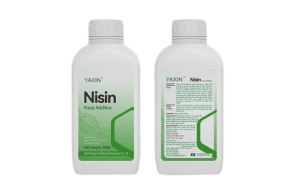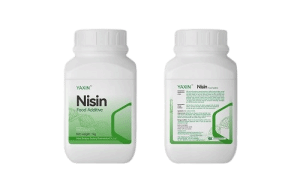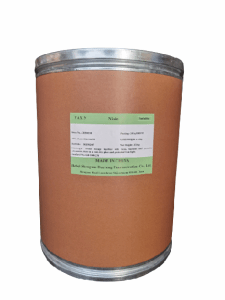
 CONTACT
CONTACT
- Linkman:Linda Yao
- Tel: +8618231198596
- Email:linda.yao@dcpharma.cn
- Linkman:CHARLES.WANG
- Department:Overseas
- Tel: 0086 0311-85537378 0086 0311-85539701
Natamycin Supply Price,Use Stability
TIME:2025-03-10To ensure the stability of natamycin lactose preparation when used in beverages, we can start from the following key aspects:
I. Controlling Usage Conditions
Temperature: The natamycin lactose preparation has better stability in a low-temperature environment. During the production, storage, and transportation of beverages, a low temperature should be maintained as much as possible. For example, the temperature in the cooling stage during production should be controlled below 25°C, the storage temperature should be kept at 5-10°C, and a cold chain vehicle should be used during transportation to maintain a temperature environment of 2-8°C.
pH Value: Natamycin has a high stability within the pH range of 3-7. When designing the beverage formula, the pH value needs to be adjusted and stabilized within this range. For instance, for fruit juice beverages, the pH value can be adjusted by adding citric acid, malic acid, etc. At the same time, attention should be paid to avoiding the use of other additives that can significantly change the pH value.
Light: The natamycin lactose preparation is sensitive to light, and light exposure will cause it to degrade. Therefore, opaque or light-shielding packaging materials should be used for beverages, such as brown glass bottles, aluminum foil packaging, or plastic bottles with added light-shielding agents, etc. Also, avoid prolonged exposure to strong light during the production process.
II. Optimizing Formula Design
Compatibility with Other Ingredients: During the research and development stage of the beverage formula, a comprehensive assessment of the interaction between the natamycin lactose preparation and other ingredients is required. For example, avoid a large amount of coexistence with ingredients having redox properties. Small-scale compatibility tests can be carried out first to observe whether there are abnormal phenomena such as precipitation, color change, and gas generation, and adjust the formula according to the results.
Adding Synergists: Some synergists can be added to enhance the stability and preservative effect of the natamycin lactose preparation. For example, adding an appropriate amount of nisin can not only produce a synergistic antibacterial effect with natamycin but also improve the stability of natamycin to a certain extent. Metal ion chelating agents such as EDTA can also be added to prevent the degradation of natamycin by metal ions.
Adjusting the Proportion of Lactose: As a carrier, the proportion of lactose has an impact on the stability of natamycin. The optimal proportion of lactose needs to be determined through experiments. Generally speaking, when the mass ratio of lactose to natamycin is within a certain range (such as 5:1 to 10:1), it can better ensure the stability and dispersibility of the preparation in beverages.
III. Improving the Production Process
Dissolution and Dispersion: During the beverage production process, it is necessary to ensure that the natamycin lactose preparation is fully dissolved and evenly dispersed. Appropriate stirring equipment and processes can be used. For example, use a high-speed shear mixer to stir at a certain rotation speed and for a certain period of time to make it evenly dispersed in the beverage. It can also be pre-dissolved with a small amount of solvent first, and then added to the beverage for thorough mixing.
Sterilization Method: Select an appropriate sterilization method to avoid the destruction of the stability of the natamycin lactose preparation caused by high-temperature and long-time sterilization. For example, using pasteurization or ultra-high temperature instantaneous sterilization (UHT) technology can effectively kill the microorganisms in the beverage and reduce the impact on natamycin.
Filling and Sealing: Keep the environment clean during the filling process to avoid microbial contamination. At the same time, ensure the accuracy of the filling amount, reduce the headspace, and prevent oxygen from entering. The sealing should be tight, and high-quality bottle caps, bottle stoppers, or sealing films can be used to ensure that the beverage is not affected by external environmental factors during storage.
IV. Strengthening Quality Monitoring
Raw Material Testing: Conduct strict testing on the purchased raw materials of the natamycin lactose preparation, including indicators such as content, purity, particle size, and moisture, to ensure that the quality of the raw materials meets the requirements. Each batch of raw materials should be inspected, and only the raw materials with all qualified indicators can be put into use.
Process Monitoring: During the beverage production process, regularly test the semi-finished and finished products, monitor the content change of natamycin, microbial indicators, and the physical and chemical properties of the beverage. If any abnormalities are found, adjust the production process or take measures in a timely manner.
Stability Tests: Before the product is launched on the market, conduct accelerated stability tests and long-term stability tests. Simulate different storage conditions, such as high temperature, high humidity, light exposure, etc., observe the stability of the natamycin lactose preparation in the beverage and the quality change of the product, and evaluate the shelf life and storage conditions of the product according to the test results.
- Tel:+8618231198596
- Whatsapp:18231198596
- Chat With Skype







